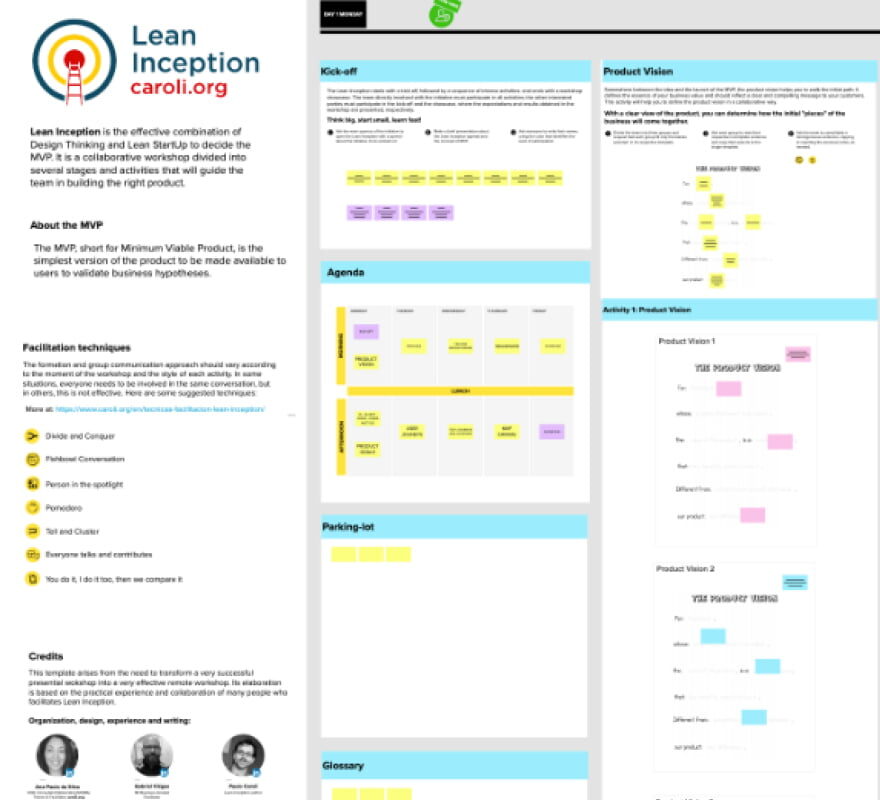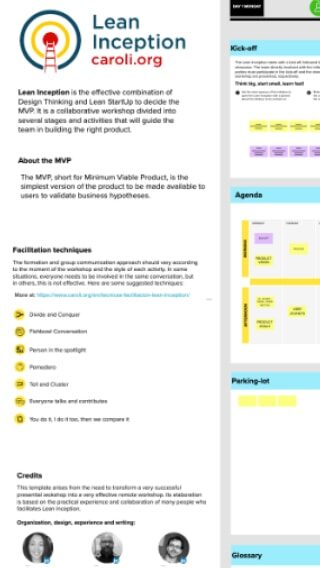
The following excerpt is transcribed from the FON event that took place on 03 December 2020.
Key points
- Successful and innovative companies have been found to apply the Lean Startup ‘Build-Measure-Learn’ cycle, allowing them to make faster and better business decisions.
- The purpose of a ‘minimal viable product’ (MVP) is not to build the entire vision of the product, but rather to be an indicator of whether the product is heading in a successful direction.
- Lean Inception workshops help with the MVP decision-making process by bringing together the methods of User Experience (UX) research and Lean Startup.
Speaker
Paulo Caroli is the author of the best-seller Lean Inception: How to Align People and Build the Right Product, which shares the secret behind the success of the Silicon Valley Lean Startup movement. His most recent contribution, the MVP Canvas, is a visual tool that helps entrepreneurs align and define the MVP-Minimum Viable Product strategy.
Principal Consultant at ThoughtWorks and Co-Founder of AgileBrazil, Paulo has more than twenty years of digital products creation experience working in several corporations in Brazil, India, USA, Latin America and Europe.
Lean Start-Up: Where it started
“Think big, start small, learn fast.”
— Paulo Caroli
The core principles of the Lean Startup methodology (such as ‘minimal viable product’ (MVP) and ‘Build-Measure-Learn’) were coined and made popular by Eric Ries, in his book The Lean Startup.
Unlike older project-oriented practices that emerged from the ‘Iron Triangle’, which models the constraints of project management (Cost, Scope and Time), Lean Startup is product-oriented. Successful and innovative companies have been found to apply the ‘Build-Measure-Learn’ cycle, allowing them to make faster and better business decisions. Furthermore, customer feedback helps drive companies to pivot when change is required. By gathering data from its users, ideas are quickly validated or changed based on their responses making way for a new MVP to be built for further testing.
What is a Minimum Viable Product (MVP)?
“A minimum viable product (MVP) is the simplest version of a product that can be made available to the users to validate a business idea.”
— Paulo Caroli
The key player of Lean Startup and Lean Inception is the MVP. The role of the MVP is to validate a business idea, which is then evolved through the Build-Measure-Learn’ cycle. The feedback loop continues as new features and elements are added, ensuring that every change adds value to the user.
The purpose of an MVP is not to build the entire vision of the product. Instead, it is intended to be an indicator of whether the product is heading in a successful direction.
Lean Inception: How to decide on an MVP
When a team is assembled with people from diverse backgrounds, deciding on an MPV can be a difficult process as everyone will have different perspectives. Lean Inception workshops help with this decision-making process by bringing together the concepts of user experience (UX) research and Lean Startup.
UX research helps to discover and iterate a product that best fits the needs of the users or is based on the feedback provided by the user. On the other hand, Lean Startup approaches from the perspective that users don’t know what they want. Therefore, an MVP is necessary to validate a business hypothesis.
Lean Inception brings concepts together from three perspectives – business, users and technology – to build an MVP that goes through the cycle of learning and building.
Q&A
Where are the biggest challenges and opportunities in applying prototypes and lean for remote teams?
PC – The first challenge we have is that we’re still not used to working remotely, but I think a lot of us have overcome it through the use of great tools (like MURAL). One of the biggest challenges I still have is facilitating and working with a lot of people remotely. Activities need to be planned ahead of time and breakout rooms need to be utilised so that people aren’t speaking over each other during workshops. Instructions also need to be more explicit because the facilitator can’t ‘see’ what’s going on in the room and when people go into breakout rooms, if you’re not very clear, people will get confused about the activity and have their doubts about their outputs.
What are the biggest risks for organisations that don’t apply MVP and the principles of lean to their production process?
PC – The biggest risks of not applying the concepts of fast prototyping and MVP are that there will be a big waste of time, money and resources. That’s it. Even if you believe that you have an amazing idea, you won’t have a clue how well it will work when it’s in the hands of the user. And if you wait too long and produce a full product after a year of development, only to learn that the user doesn’t like it, it would be a big waste of time, money and effort.
Where do you see the future of the discipline of Agile going and where do you see new opportunities for change?
PC – Years ago, when we had the second Industrial Revolution, it was about the manufacturing world, and a lot of theories evolved from that, like the Project Management theory. And we apply that not only to manufacturing industries, but also to all industries today.
Similarly, I think this is what’s happening with the learnings that were started and applied into the software and digital products world. For example, with the new version of Scrum, it is now simpler because it can be applied to any business strategy, not only for digital products.
This is the same for Lean Inception. I started it in 2011 and realised that Eric Ries was using Lean Startup, not only for software companies, but for everything. So, when I wrote Lean Inception, I wrote it not only for people working with digital products, but also for any group of people to use because it’s helpful to align any team when they’re deciding on what kind of MVP to build.
In terms of new opportunities for change, for me, I think we need to work closer to each other in a more collaborative way, with a diverse group of people. We still have a long way to go, but we’re getting better at it.
Further reading
- Crossing The Chasm, by Geoffrey A. Moore
- Cumulative Flow Diagram, by Paulo Caroli
- Empowered, by Marty Cagan, Chris Jones
- FunRetrospectives: activities and ideas for making agile retrospectives, by Paulo Caroli
- Lean Inception: How to Align People and Build the Right Product, by Paulo Caroli
To see all our speaker Future Of Now book recommendations click here.
More about Paulo Caroli and ThoughtWorks:
About The Future Of Now series
Our goal at More Space For Light with The Future of Now (FON) series is to build a community of like-minded passionate professionals. We intend to bring together like-minded professionals to share, inspire, and explore new opportunities for growth. So you can discover new ways of working to bring back into your organisation.
More about the organisations connected to this event
- morespaceforlight.com.au – A strategy and innovation consultancy specialising in both in-person and/or remote workshops, design programs and Design Sprints.
- MURAL.CO – a remote collaboration whiteboard. With this platform you will supercharge your remote and in-person meetings and workshops.
- hacker.exchange – a global education company that is supercharging the next generation of startups & leaders.


